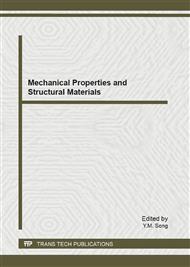p.3
p.7
p.12
p.16
p.20
p.24
p.28
p.33
Control of Machining Process for Titanium Alloy Based on Green Cooling and Lubricating Technology
Abstract:
The machining process of titanium alloys always need special control by using coolant and lubricant as it is one of the difficult-to-cut materials. The cutting experiments are carried out based on green cooling and lubricating technology. To achieve green cutting of titanium alloy Ti-6Al-4V with water vapor cooling and lubricating, a minitype generator is developed. Compared to dry and wet cutting, the using of water vapor decreases the cutting force and the cutting temperature respectively; enhances the machined surface. And it can help to chip forming and breaking. Water vapor application also improves Ti-6Al-4V machinability. The excellent cooling and lubricating action of water vapor could be summarized that water molecule has polarity, small diameter and high speed, can be easily and rapidly to proceed adsorption in the cutting zone. The results indicate that the using of water vapor has the potential to attain the green cutting of titanium alloy.
Info:
Periodical:
Pages:
7-11
Citation:
Online since:
October 2012
Authors:
Keywords:
Price:
Сopyright:
© 2012 Trans Tech Publications Ltd. All Rights Reserved
Share:
Citation:


